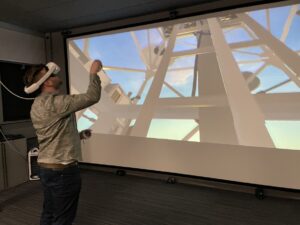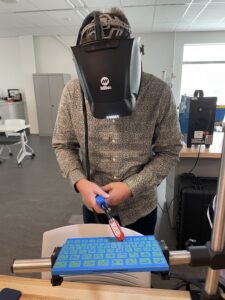More and more, we’re seeing curriculum designers turn to virtual reality as part of their curriculums. Incorporating VR training into curriculums can enhance the learning experience and provide students with immersive, interactive, and engaging opportunities.

Here are some steps curriculum writers can take to include virtual reality training:
Identify Learning Objectives: Determine the specific learning objectives that can be effectively achieved through virtual reality training. Consider subjects or skills that can benefit from immersive experiences, such as science experiments, hands-on simulations, or technical skills training.
Find the right VR Content: Find the content that aligns with the identified learning objectives. Explore available VR applications, simulations, or experiences that provide relevant educational content. Consider factors such as quality, accuracy, interactivity, and compatibility with the curriculum. Of course, drop us a line if you need help with this!
Integrate VR Experiences into Lessons: Identify appropriate points in the curriculum where VR experiences can be incorporated to enhance student understanding and engagement. Determine how VR experiences can complement and reinforce existing lesson plans, activities, or assignments. Ensure that the VR content seamlessly integrates with the overall curriculum flow.
Provide Context and Guidance: Ensure that students understand the purpose and context of using VR within the curriculum. Explain how the VR experiences relate to the broader learning goals and provide guidelines or instructions on how to navigate and interact with the VR content effectively.
Assess Learning Outcomes: Define assessment methods and criteria to evaluate student learning outcomes from the VR training. Determine how the V
R experiences will be assessed, whether through quizzes, projects, presentations, or other evaluation methods. Align the assessment with the learning objectives and ensure it measures the desired knowledge, skills, or competencies.

Training and Technical Support: Provide adequate training and technical support to both teachers and students to effectively utilize the VR technology and content. Offer workshops, tutorials, or resources to familiarize teachers with the VR tools and platforms. Ensure that students have access to the necessary VR hardware and software and provide guidance on troubleshooting or technical issues.
Evaluate and Improve: Continuously assess the effectiveness of integrating VR training into the curriculum. Collect feedback from teachers and students to identify strengths, weaknesses, and areas for improvement. Make adjustments to the curriculum based on the feedback received and emerging best practices in VR education.
Remember, when incorporating VR training into curriculums, it is essential to strike a balance between VR experiences and other instructional methods. Virtual reality should be used as a tool to enhance learning, promote engagement, and provide unique experiences that complement and reinforce traditional teaching approaches.